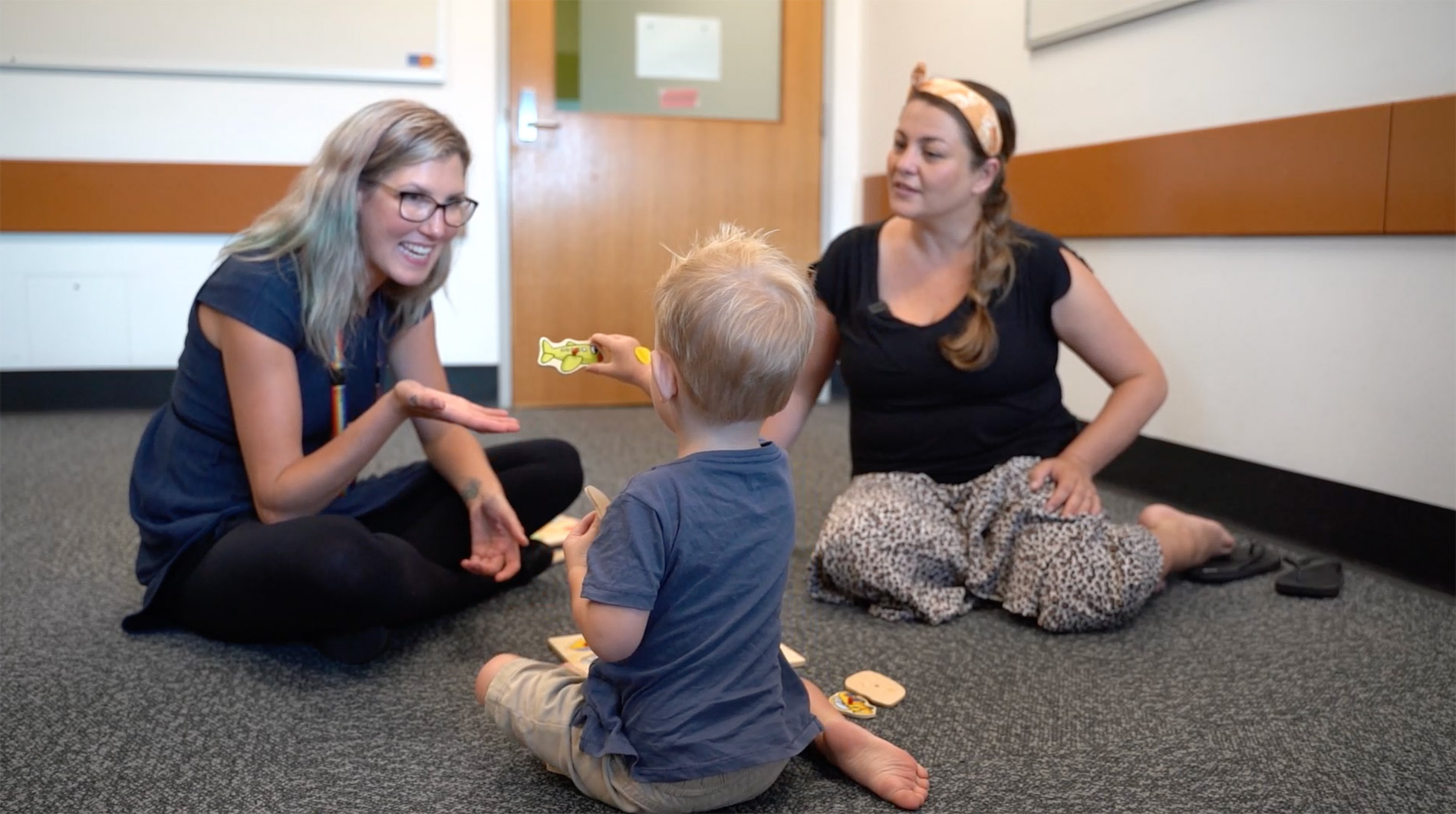Get down to your child's level to encourage interaction.

Getting face to face will help you tune into your child’s communication attempts.
You can sit on the floor with them or somewhere where your face is at a similar height to theirs (e.g. on the couch, high chair, small table and chairs, etc).
Observe and respond to your child’s:
- Actions (e.g. leaning body forward)
- Gestures (e.g. pointing, waving)
- Facial expressions
- Interests (e.g. does your child like rolling or kicking the ball?)
This will allow you to notice your child's non-verbal communication attempts. When you acknowledge these attempts, you share moments of positive interaction with your child. Later you can add language to their nonverbal communication.
Let's watch...
The child isn't giving much eye contact, making sounds or attempting to say words.
The child attempts to give her mother the ball and bangs on it but her mother does not interpret her message or use of gesture.
By asking a question that the child is not able to answer - "what do you do with that?". In this situation, if the parent was face to face and able to interpret the child's message then she could have modelled some action words such as "bounce" to interpret what the child was doing.
Let's break it down...
Let's watch...
Playing, showing, using gestures
By copying them, or commenting on what they are doing
Airplane sounds and words such as up and down
By copying, responding, and adding words/expanding
Let's break it down...
Caregiver Self-reflection
At home:
- What do you observe your child doing at home when you get face to face?
- What is your child interested in?
- What is your child telling you?
- How does your child communicate what he/she needs or wants?
- Does your child use actions, gestures, facial expressions, sounds, words or a combination of these to communicate?
Tips for getting face to face
- Be at the same height as your child so they can see your face
- Make sure you can see their facial expressions and gestures
- Make sure you can see what they are interested in
Implications for not getting face to face
- Not getting face to face means that you may have trouble interpreting your child’s message
- You may miss opportunities for communication
- Your child will find it harder to learn that communication is a two-way street




